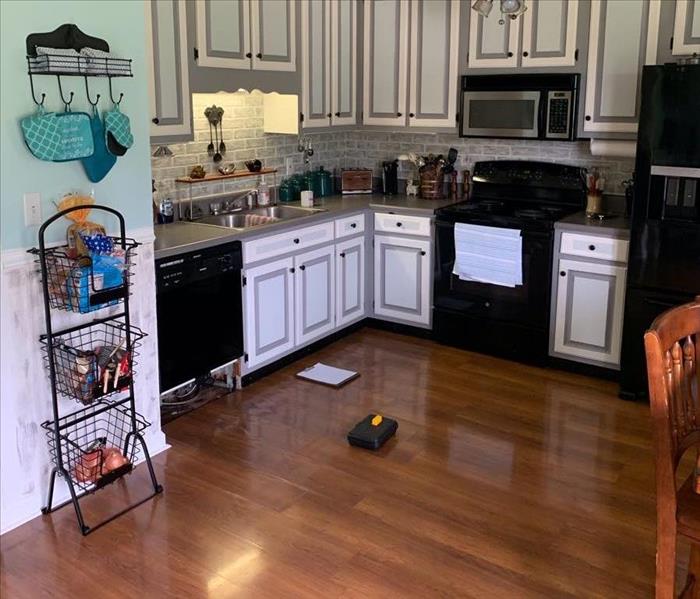
Step 4: Drying and Dehumidification
Our Water Damage Restoration Process
The next step in our six step process is drying & dehumidification. Once we extract the excess water, floors and walls may appear to be dry, but a quick touch of the hand will reveal they are still hiding moisture. Nearly all building materials such as wood paneling, drywall, carpeting, and wood flooring are porous. This will cause them to retain water and become warped, force them to break down and become unsafe, or cause mold damage. We use powerful air movers & dehumidifiers to extract and properly dry your property, whether residential or commercial. We strive to make it “Like it never even happened.”
Drying / Dehumidification
Our Professionals will use room measurements, temperature, and relative humidity to determine the optimal number of air movers and dehumidifiers to dry your home or business. We’ll carefully monitor the progress using moisture meters until the materials return to acceptable drying goals.
- Use Dehumidification Equipment
- Use Monitoring Equipment to Track Progress
Monitor Floor and Walls
We check the moisture levels to monitor the drying process.
- Monitor Floors
- Monitor Walls
Drying Equipment
- Industrial-grade dehumidifiers help prevent secondary water damage like swelling and warping of floors, walls, and furniture.
- High-speed air movers create airflow across walls, carpets, pads, and furniture, which accelerates the evaporation of moisture.




 24/7 Emergency Service
24/7 Emergency Service




